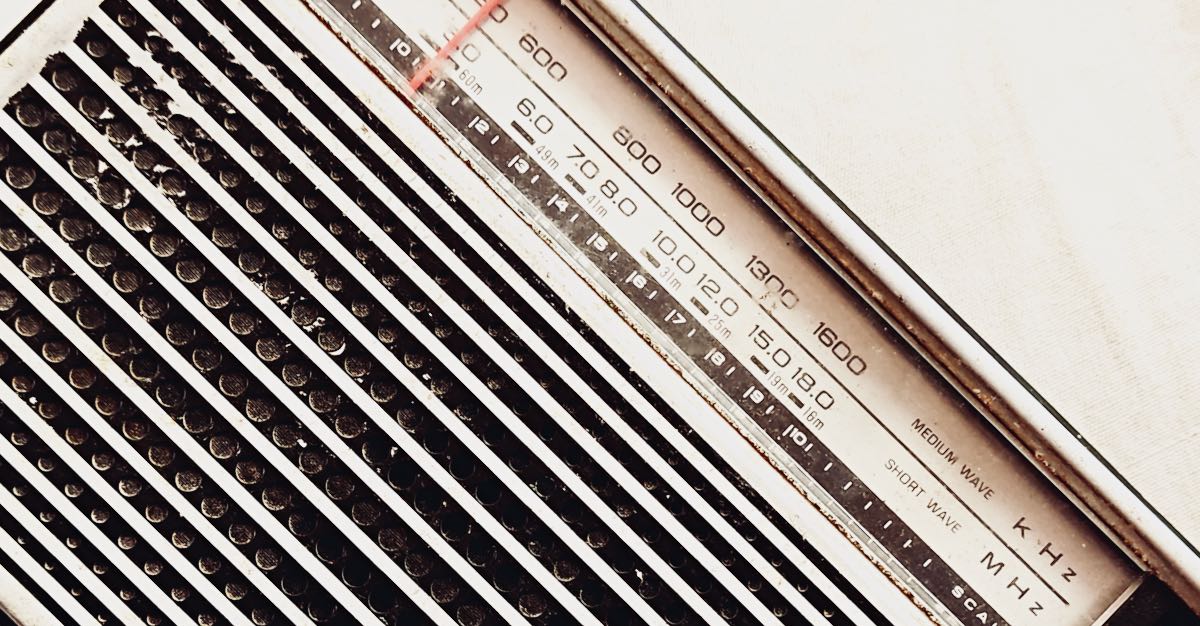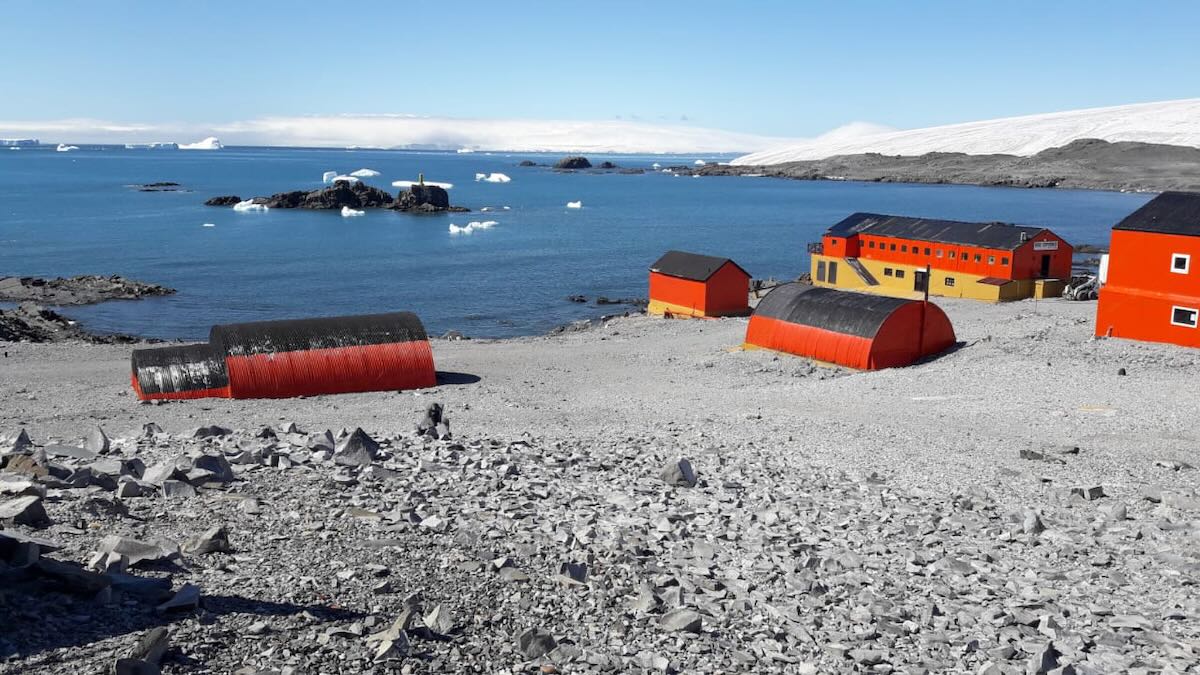 Many thanks to SWLing Post contributor, Bill Tilford, who shares the following news:
Many thanks to SWLing Post contributor, Bill Tilford, who shares the following news:
Radio Angela (WBCQ 5130) has undergone transmitter repair and expects to resume broadcasting 4/24 at 0200 UTC.
Thanks for the tip, Bill!

 Many thanks to SWLing Post contributor, Adrian Korol, of RAE who shares the following announcement:
Many thanks to SWLing Post contributor, Adrian Korol, of RAE who shares the following announcement:
DO YOU WANT TO KNOW THE NEW LRA 36 DREAM TEAM?
The winter 2023 staff arrived to Base Antartica Conjunta Esperanza .
They are all Antarctic women:
OP: Nicole Valdebenito
LISTEN ON SHORTWAVE
Saturday April 22
from 20:00 UTC to
Sunday April 23
02:00 UTC
15476 khz (USB)
Coordination: Juan Carlos Benavente
TC Gustavo Cordero is our LRA 36 Season 2023 Director
Overall Supervision : Adrian Korol (RAE Director)
LRA 36 URL AUDIO STREAM: https://vmf.edge-apps.net/embed/live.php?streamname=sc_rad32-100131&autoplay=true
LRA 36 Radio Nacional Arcangel San Gabriel
ask for your eQSL
reception reports: [email protected]
Many thanks to SWLing Post contributor, Jerome van der Linden, who shares the following announcement from the DRM Consortium on Instagram:
“Claudius Obrecht’s broadcast in DRM on 22 April 2023, 14.00 UTC on 21,580 MHz”
Hi SWLing Post community Fastradioburst23 here letting you know of an event to be aired live by the Imaginary Stations crew this Sunday 23rd April 2023 at 2200 UTC on 9395 kHz via WRMI.
The transmission will be coming live from the Skybird Supper Club Imaginary Lounge and they’ll be a free complimentary cocktail for every participant (subject to availability of course). Expect the finest lounge and exotica classics for your listening pleasure. Grab that silk dressing gown and cigarette holder (with no cigarette on the end) and enjoy.
Welcome to the SWLing Post’s Radio Waves, a collection of links to interesting stories making waves in the world of radio. Enjoy!
Many thanks to SWLing Post contributors Paul, Frank Howell, NT, and Dan Finegan for the following tips:
The Buzzer, also known as UVB-76 or UZB-76, has been a constant companion to anyone with a shortwave radio tuned to 4625 kHz. However, [Ringway Manchester] notes that there is now a second buzzer operating near in frequency to the original. Of course, like all mysterious stations, people try to track their origin. [Ringway] shows some older sites for the Buzzer and the current speculation on the current transmitter locations.
Of course, the real question is why? The buzzing isn’t quite nonstop. There are occasional voice messages. There are also jamming attempts, including one, apparently, by Pac Man.
Some people think the new buzzer is an image, but it doesn’t seem to be the same signal. The theory is that the buzzing is just to keep the frequency clear in case it is needed. However, we wonder if it isn’t something else. Compressed data would sound like noise. Other theories are that the buzzing studies the ionosphere or that it is part of a doomsday system that would launch nuclear missiles. Given that the signal has broken down numerous times, this doesn’t seem likely. [Continue reading…]
The pioneering inventor died on March 27th at the age of 96.
If you haven’t heard of Virginia Norwood, it’s about time you did. An aerospace pioneer whose career would have been historic even without its undercurrent of triumph over misogynistic discrimination, she invented the Landsat satellite program that monitors the Earth’s surface today. Norwood passed away on March 27th at the age of 96, as reported by NASA and The New York Times.
She achieved all this despite significant pushback from the male-dominated industry before and after her rise. Despite her obvious talent, numerous employers declined to hire her after graduating from the Massachusetts Institute of Technology. For example, Sikorsky Aircraft told her they would never pay her requested salary, equivalent to the lowest rank in the civil service. Another food lab she applied for asked her to promise not to get pregnant as a condition of her employment. (She withdrew her application.) Finally, the gun manufacturer Remington appreciated her “brilliant” ideas in an interview but told her they were hiring a man instead. [Continue reading…]
Facing an existential moment in the 100-year history of the medium, AM broadcasters are banding together, calling on allies in Congress, and enlisting listener support to preserve their place in the automobile. The heads of 10 state broadcasting associations have formed a Dashboard Subcommittee within the National Alliance of State Broadcasters Associations (NASBA) to slow or stop the removal of AM radio from the dashboard. The two-week old group is working on multiple fronts including fact finding, education and advocacy.
By Jock Elliott, KB2GOM
It was the survey that Thomas, our Maximum Leader, conducted that got me to thinking about this.
The survey revealed that portable radios were used 38.6% of the time by SWLing Post readers as their “daily driver.” I like portable radios, too, and use them frequently. Hold that thought for a moment.
I also like medium wave DXing (content DXing, really, I enjoy tuning around for unusual programs) because, as Gary DeBock once put it: “It’s a target-rich environment.” With that in mind, I was exploring the CCrane website and found a couple of items – the Terk AM Advantage and the Twin Coil Ferrite® AM Antenna Signal Booster that looked like they might help portable radio listeners who want to pull in medium-wave signals better. I asked the CCrane folks if they would like to review both products, and they sent them to me without charge.
Bottom line: they both work for boosting reception of medium-wave signals.
The Terk AM Advantage is a nine-inch tunable loop encased in plastic, and it requires no power supply. Simply place it near your portable receiver and just the dial to the desired frequency, and you could get up to a 20 dB gain in the signal you want to hear. The loop of the Terk AM Advantage inductively couples with the ferrite antenna inside your portable radio, although the unit comes with a direct wire connector that can be used with some radios.
I tried the Terk AM Advantage with my CCrane Skywave SSB on an AM that was coming in with a lot of static at my location. Without the AM Advantage, I had 3 bars of signal strength. As soon as I placed the AM Advantage close to the Skywave and adjusted the tuning knob, the signal strength increase to 5 bars, and the audio was much easier to hear with less noise.
With my Tecsun PL-880, which has a numerical signal strength meter, signal strength was 11 without the AM Advantage, but with the AM Advantage, signal strength increased to 14, and it was much easier to hear. The Terk AM Advantage definitely provides a modest boost in signal strength and clarity, is easy to use, and requires no batteries or external power supply.
The Twin Coil Ferrite® AM Antenna Signal Booster is more complicated. It consists of an antenna element that measures 8.5″ W x 2.5″ H x 1.25″D, a tuner unit that measures 3.25″ W x 4.25″ H x 1.25″ D, a small ferrite stick, and some patch cords. It comes with an AC adaptor and can also be powered by a 9-volt battery. For radios with external antenna connectors, package also includes a RCA female patch cord to two bare wire ends.
Set up is pretty easy: connect the tuner unit to the antenna element with a patch cord; connect the tune to the ferrite stick with another patch, and provide power through either the AC adaptor or 9-volt battery. (I used a battery).
Here are C.Crane’s directions for how to use The Twin Coil Ferrite® AM Antenna Signal Booster with a portable radio:
And The Twin Coil Ferrite® AM Antenna Signal Booster works like crazy! With same station on my CCrane Skywave SSB, it boosted signal strength from 3 bars to full scale. With my Tecsun PL-880, it increased signal strength from 11 to 38.
In my view, although The Twin Coil Ferrite® AM Antenna Signal Booster costs twice as much as the Terk AM Advantage and is more complicated to use, it is more than twice as effective in boosting medium-wave signals.
by 13dka
Whether or not a radio is a joy to listen to, or apt for difficult DX is decided to a large part by the last IF filter stage. Most radios of the past didn’t come with many IF filters to begin with, their quality varied a lot and harsh compromises had to be made in multi-purpose radios. With the advent of digital filtering and inexpensive DSP portables, we got spoiled by a rich choice of selectivity settings that came with an idiosyncrasy I had to wrap my head around first, namely a shift in how some (digital) filters are labeled now.